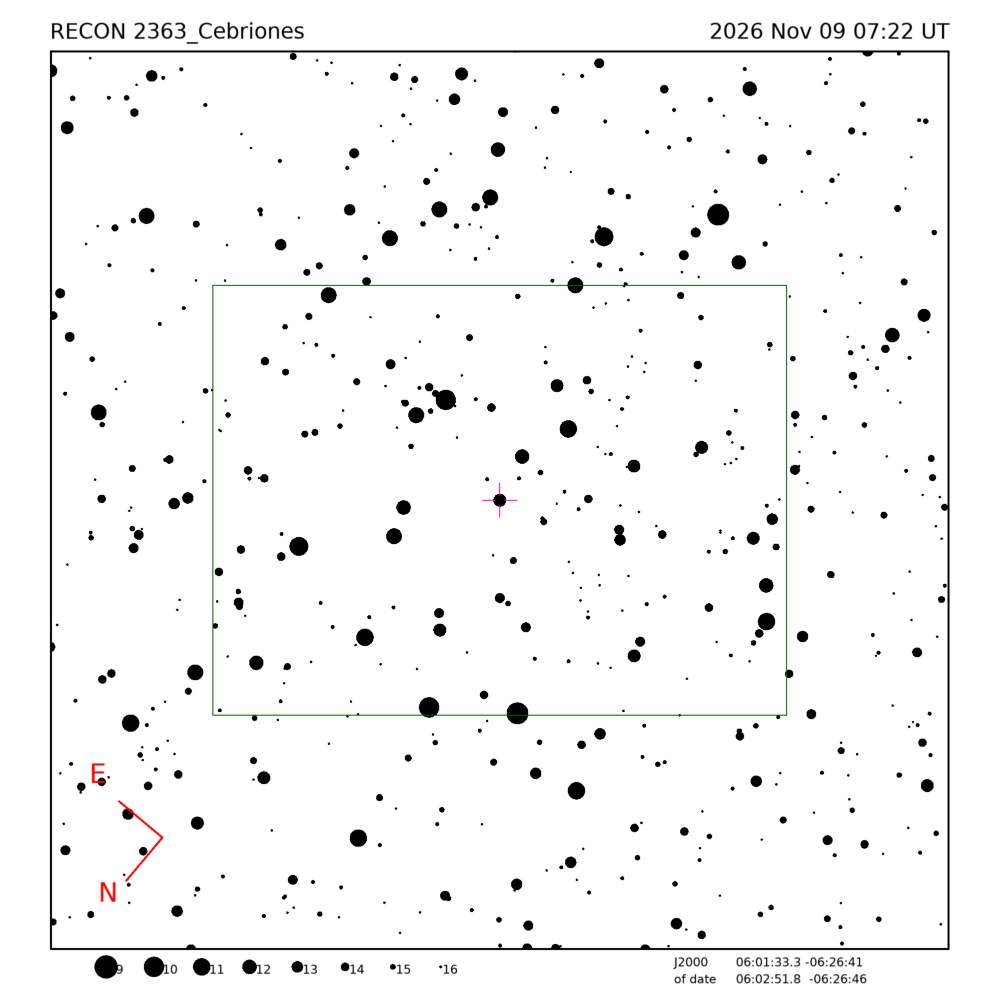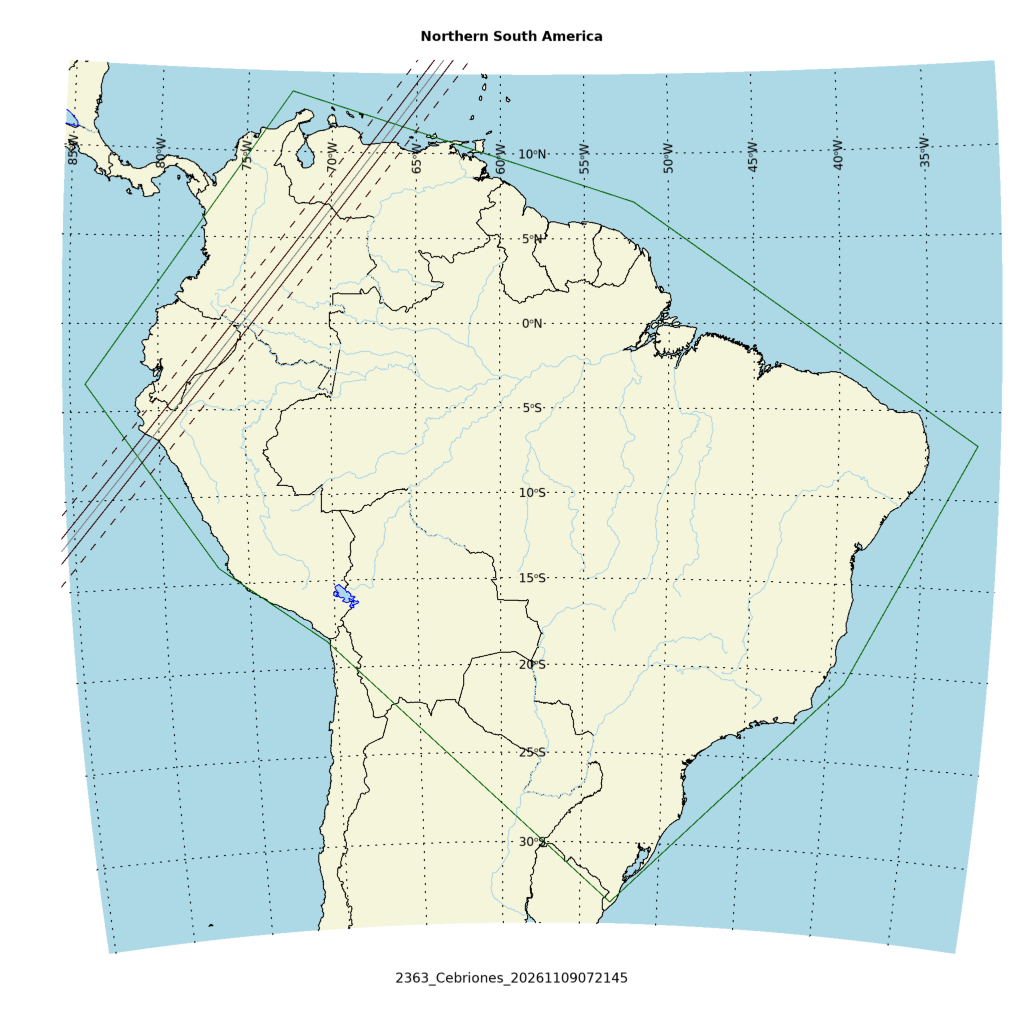
Occultation event with (2363) Cebriones, event index number 4618
Regions able to see the event: SAmericaN
Geocentric closest approach at 2026/11/09 07:21:45 UTC
J2000 position of star is 06:01:33.3 -06:26:41
Equinox of date position of star is 06:02:51.8 -06:26:46
Star is 126 degrees from the moon. Moon is 0% illuminated.
Stellar brightness G=13.1, apparent brightess of occulting body is G=14.5
Use an exposure time of 0.12 seconds with the standard RECON-QHY system.
SNR of 9.9 per integration for unocculted signal
Expected flux drop is 78% with SNR of 7.8 for the occulted depth (per occulted point)
Apparent velocity is 16.9 km/sec on the sky relative to the star, or, 17.6 arcsec/hr.
Position angle of asteroid motion is 36.5 degrees
The recommended exposure time corresponds to 2.0 km per image.
The 1-sigma error in the time of the event is 1.3 seconds.
The 1-sigma cross-track error in the shadow position is 28.2 km.
The sky-plane scale is 3450.8 km/arcsec.
Diameter estimates:
93.8 km assuming a 5% albedo, maximum of 5.6 sec for a central chord
38.3 km assuming a 30% albedo, maximum of 2.3 sec for a central chord
Cross-track diameter of 96.0 km used for deployment plan.
Star training set for 2363_Cebriones, (2026/11/09 07:22UT) Object RA Dec mag sep mel Rigel 05:15:49.8 -08:10:21 0.1 11.79 134 Saiph 05:49:01.9 -09:39:44 2.1 4.70 127 PPM 188595 05:56:49.9 -04:36:51 5.7 2.37 128 PPM 188670 06:01:06.8 -06:35:52 7.3 0.46 126 PPM 188697 06:02:30.0 -06:12:45 9.2 0.25 126 2363_Cebriones 06:02:51.8 -06:26:46 14.5 126 Positions are for equinox of date


Star training set for 2363_Cebriones, (2026/11/09 07:22UT) Object RA Dec mag sep mel Rigel 05:14:32.3 -08:12:06 0.1 11.79 134 Saiph 05:47:45.4 -09:40:11 2.1 4.70 127 PPM 188595 05:55:30.2 -04:37:00 5.7 2.37 128 PPM 188670 05:59:48.4 -06:35:51 7.3 0.46 126 PPM 188697 06:01:11.3 -06:12:41 9.2 0.25 126 2363_Cebriones 06:01:33.3 -06:26:41 14.5 126 Positions are for J2000